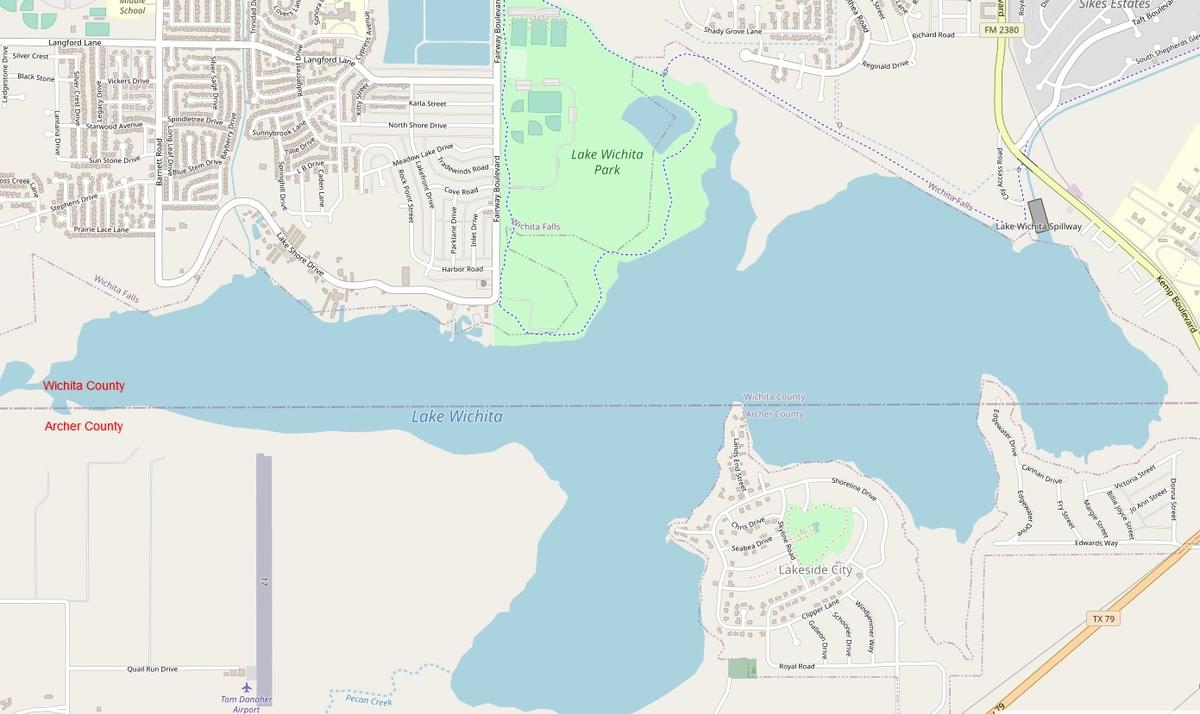Lake Wichita (Archer Co.)

Tips for Birding
If you carefully keep your bird records by county, be sure to use the specific hotspots at Lake Wichita so that the birds will be assigned to the proper county. The Wichita-Archer county line divides the lake in half. Wichita County is on the north side of the lake. Archer County is on the south.
Birds of Interest
A lot of ducks can be seen on the Archer County side from the boat ramp, but when the lake's water level is low most of the birds are on the Wichita County side.
About this Location
This hotspot has very limited access points for viewing. There are "holes" in between houses in both Lakeside City East and West where you can view parts of the lake. The picture with the sign "Residents Only" is in Lakeside City West and has the best viewing opportunity, but view birds at your own risk. A lot of the water birds seen in Archer County were seen and recorded from the Wichita County side (Spillway and Big Hill). Most of the land birds have been seen from yards or private residencies. Bowman Road (on the west side) leads to Bowman Cemetery which is a viable option for land birds.
About Lake Wichita
See all hotspots at Lake Wichita
Lake Wichita is a reservoir built in 1901 on Holiday Creek, a tributary of the Wichita River. It is the third oldest reservoir in the state and has a surface area of 1,224 acres. Lake Wichita Park is a popular recreation area on the north shore of the lake, offering hiking, biking, fishing, disc golf, and sports fields. The lake and the park are undergoing a revitalization project to restore the ecosystem and enhance the amenities.
Officially incorporated in 1889, the City of Wichita Falls continued to experience growth entering the Twentieth Century. With this increased population, the availability of water remained important. As a result, Joseph A. Kemp, a local businessman and promoter of Wichita Falls, began looking for a place to build a dam. Always on the lookout for a lake location that could supply flood control, irrigation, and community water, Kemp found a site at Holiday Creek.
While returning from a business trip after a rainstorm in 1900, Kemp came across a flooded Holiday Creek near the community of Bowman, a small town near Wichita Falls. At his own expense, Kemp then brought engineers who determined the potential location feasible for a reservoir. Residents of Bowman were forced to leave as the dam, completed in 1901, captured the water from Holiday Creek and formed a lake. The third man-made lake in Texas, a concrete dam, completed in 1921, eventually replaced the original earthen dam with a more reliable means of holding water.
Besides providing water and irrigation for residents, Lake Wichita became known as a choice recreation spot. In 1904, lands were granted for a public road to the lake. Shortly thereafter, Kemp developed amusements near the lake including a pavilion, hotel, race track, baseball park, rides, boating, picnicking, and summer cottages. Lake Wichita's water levels continued to diminish due to silting and became essentially dry by 2014 before rebounding from significant rains. The lake served as the primary potable water source and recreational area for many years and continues to hold an important place in the development of the community of Wichita Falls.
Notable Trails
None
Features
Roadside viewing
Restrooms on site
Wheelchair accessible trail
Entrance fee
Content from Scotty Lofland
Last updated November 2, 2023
